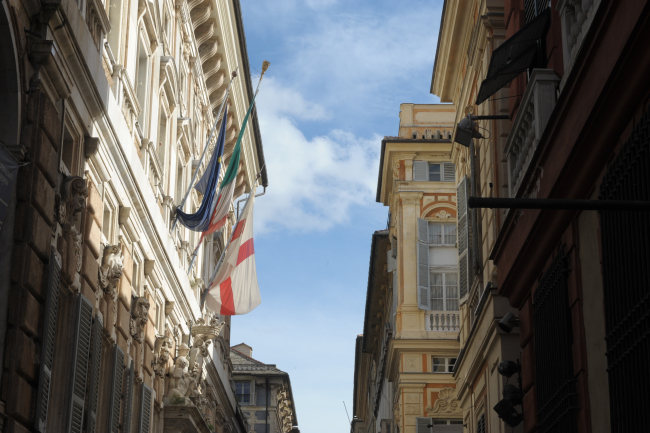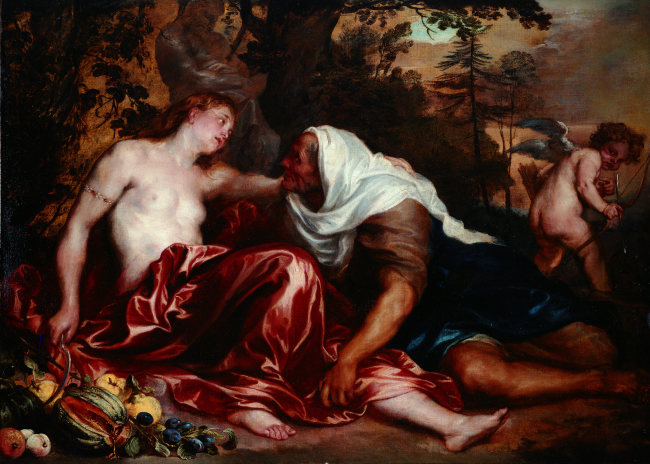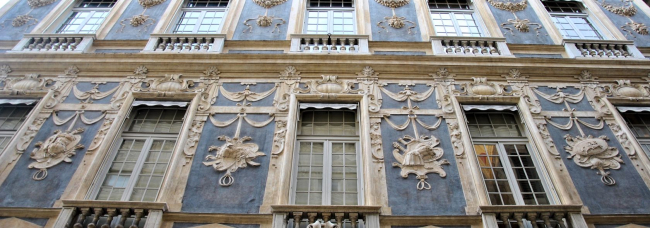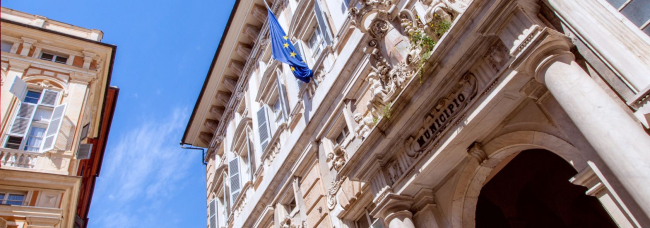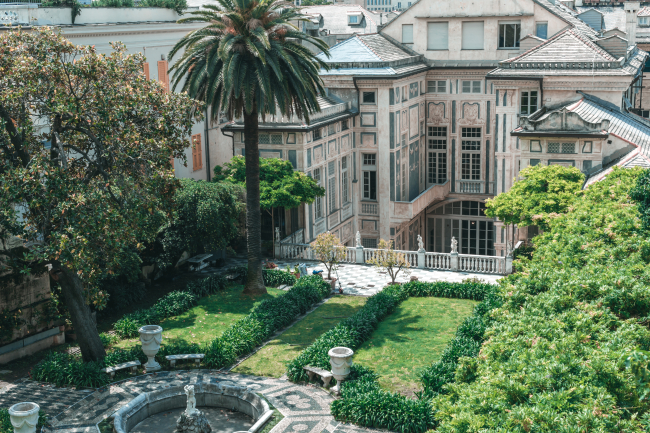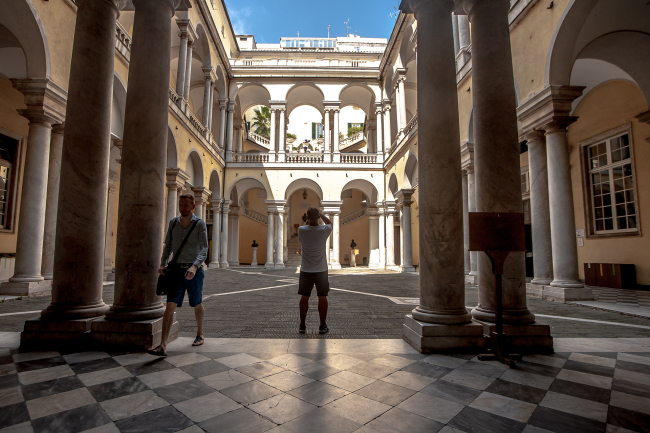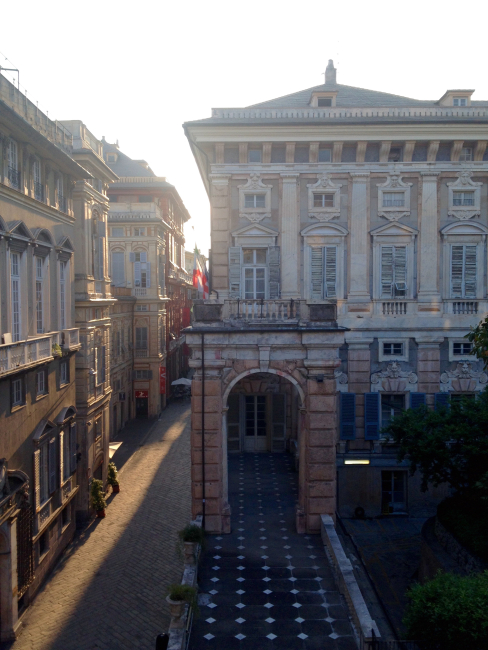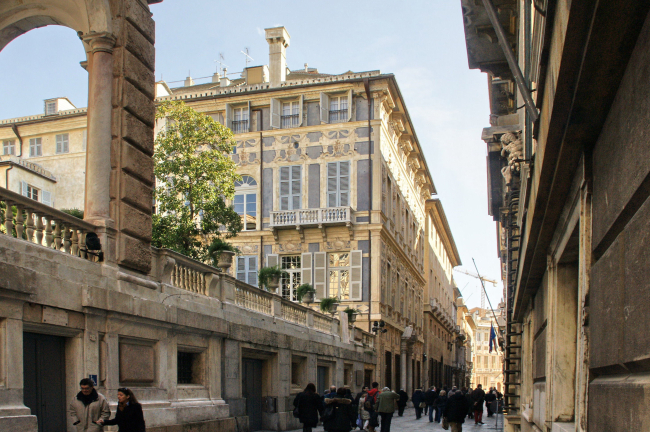Via Garibaldi, a journey into the heart of the UNESCO Rolli site and the Strade Nuove
Via Garibaldi, a journey into the heart of the UNESCO Rolli site and the Strade Nuove
Dive into history in a place where time seems to stand still, between majestic palaces and luxurious gardens, Via Garibaldi, with its architectural wealth and imposing buildings, is one of the main streets of Genoa and one of the largest in the historic centre. Originally Strada Maggiore, then Strada Nuova but known until the nineteenth century as Via Aurea (the Golden Street). In 1882 it was renamed in honour of Giuseppe Garibaldi.
Walking along Via Garibaldi you savour the ancient beauty of this wonderful city through the stately and elegant dwellings of its wealthy merchants. From the mid-1500s onwards Genoa was enriched with magnificent facades in stucco, marble or painted decorations, grandiose atriums, splendid gardens with fountains and nymphaeums; and inside, large frescoed halls, sumptuous furnishings, precious art collections and rich picture galleries. These luxurious residences did not escape the eye of refined artists such as the great Flemish painter Pieter Paul Rubens who, at the beginning of the seventeenth century, published his book of drawings of the buildings, which he proposed as a model for the residences of the aristocracy of the whole Europe.
The quality of the architectures and of the decorations quality of the Genoese palaces, as well as Ruben’s interest, made "The Strade Nuove and the system of the Palazzi del Rolli" become part of UNESCO World Heritage Site in 2006.
In the magnificent setting of Via Garibaldi, the Musei di Strada Nuova, a prestigious museum complex, connects three important Genoese palaces: Palazzo Doria Tursi (Palazzo Grimaldi Niccolò), whose museum part is temporarily closed for restauration works, which, in addition to being included in the Palazzi dei Rolli, is the seat of the Town Hall (o Municipality of Genoa); moreover, in its halls you can find famous masterpieces such as the violin that belonged to Paganini; Palazzo Bianco (Palazzo Grimaldi Luca) where you can admire masterpieces by Caravaggio and many other Genoese, Italian and European artists; Palazzo Rosso (Palazzo Brignole Sale Rodolfo and Francesco), temporarily closed for restoration, is decorated with frescoes by the greatest painters of Ligurian Seventeenth century and enriched with precious furnishings.
Furthermore, Palazzo Lomellino Niccolosio (Palazzo Podestà), restored for Genoa, European Capital of Culture (2004) and seat of many important exhibitions, and Palazzo Pallavicini Tobia, home of the Chamber of Commerce, are both available in the same street (Via Garibaldi) for visits.
But where does the name Rolli come from? At the time of the ancient Republic, the Rolli of Genoa were the lists of the most beautiful palaces and dwellings of the Genoese noble families, who acted as hosts for state visits; depending on the rank of the visiting guest, a palace was chosen to host it: the higher the degree of nobility of the guest, the more sumptuous the palace had to be and the richer the family who had the honour (and also the expense) of welcoming the guest.
Twice a year, in spring and autumn, Genoa celebrates its palaces with the Rolli Days: weekends in which the buildings open their doors and show their treasures to the public.
Strolling along this street, looking up and seeing the majesty and beauty of these buildings, which for centuries have preserved precious works of art, and which we can still admire today, take you back in time, and allow you to experience unique emotions. After all, Genoa is exactly that: a surprising city.

